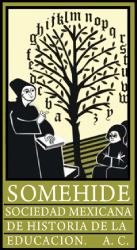Visibilization of girls and women in discourses and educational reports from the second half of the nineteenth century in Zacatecas
DOI:
https://doi.org/10.29351/amhe.v3i1.420Keywords:
History of education, women, gender studies, inclusive languageAbstract
This article analyzes the presence of linguistic strategies that are currently associated with non-sexist language, also known as gender-neutral or inclusive language, that were located in discourses and educational reports published on the Official Newspaper of the State of Zacatecas, during the period of 1868 to 1889. The aim of this study consisted on explaining to which changes of a social a nature this linguistic adaptation responded, given that, in this period, we cannot attribute them to linguistic politics based on feminist ideas, as we understand them in the present. The methodological strategy consisted in combining a historiographic approach and linguistic analysis to answer the research question. At the morphological and lexical level, the use of pairs of feminine and masculine (splitting) was identified, as well as the use of the real generic instead of the generic masculine. Cases where collective male gender nouns were used with the addition of the phrase “of both genders” were also found. They all make explicit the presence of men and women in the groups the authors were talking about. It is concluded that the use of this linguistic resources was intentional, which lead us to think that they were used as a linguistic strategy to make the presence of girls and women visible in the educational context of the second half of the nineteenth century in Zacatecas, since the configuration of the latter was changing, as more spaces were opening up for the female population to become educated. All this speaks of important transformations that took place in the local context, specifically with regard to the access and integration of girls and women to public educational institutions.
References
Contreras, L. (2005). Escuelas lancasterianas de Zacatecas en la Primera República Federal 1823-1835. Universidad Pedagógica Nacional.
Galván, L. E. (2003). Historia de mujeres que ingresaron a los estudios superiores, 1876-1940. En M. A. Arredondo (coord.), Obedecer, servir y resistir. La educación de las mujeres en la historia de México. Grupo Editorial Miguel Ángel Porrúa.
Gutiérrez, N. (2013). Mujeres que abrieron camino. La educación femenina en la ciudad de Zacatecas durante el Porfiriato. UAZ/Benemérita Escuela Normal “Manuel Ávila Camacho”.
Gutiérrez, N. (2022a). Auditoría de género en el lenguaje: violencia, educación, feminismo e igualdad sustantiva. En N. Gutiérrez y A. Román (coords.), Violencias: marcos de análisis desde los contextos educativo, laboral, cultural y de la comunicación. Astra (en prensa).
Gutiérrez, N. (2022b). La cultura escolar de las zacatecanas a principios del siglo XX: agentes y saberes de género. En R. Amaro, M. del R. Magallanes, L. Rangel y S. Camacho (coords.), Secularización y laicización de la educación pública en Aguascalientes y Zacatecas: educación sexual, institutos científicos, mujeres y género, siglos XIX y XX. UAZ-UAA (en prensa).
Gutiérrez, N. (2022c). “Indeseables” en la educación: un análisis a partir de tres disertaciones de estudiantes de la Normal de Veracruz a finales del siglo XIX. En A. M. García, J. Arcos y D. Karent (coords.), Las disertaciones. Certificar y titular al alumnado de la Escuela Normal Primaria de Xalapa, 1890-1911. Una ventana a la cultura escolar. Universidad Veracruzana.
Furtado, V. (2018). De niñas y niños: las políticas lingüísticas de género en la educación primaria uruguaya. Lingüística, 34(2), 9-31. https://doi.org/10.5935/2079-312x.20180014
Naciones Unidas (2019). Lista de verificación para usar el español de forma inclusiva en cuanto al género. https://www.un.org/es/gender-inclusive-language/guidelines.shtml
Periódico Oficial del Gobierno del Estado (1868-1889).
Scott, J. (2005). La mujer trabajadora en el siglo XIX. En D. Georges y M. Perrot (dirs.), Historia de las mujeres [vol. 4, El Siglo XIX]. Taurus.
Staples, A. (2005). Recuento de una batalla inconclusa. La educación mexicana de Iturbide a Juárez. El Colegio de México.
Tuñón, J. (1998). Mujeres en México. Recordando una historia. Conaculta.
Velasco, M. L., Vázquez, D., y Carrasco, M. (2009). El cambio lingüístico en la educación en los últimos 25 años en España. Instituto de la Mujer. https://www.inmujeres.gob.es/areasTematicas/estudios/serieEstudios/docs/cambioLinguisticoEducacion.pdf
Downloads
Published
How to Cite
Issue
Section
License
Todos los contenidos del Anuario Mexicano de Historia de la Educación se publican bajo una licencia Creative Commons Atribución No Comercial 4.0 Internacional (CC BY-NC 4.0), que permite compartir (copiar y redistribuir el material en cualquier medio o formato) y adaptar (remezclar, transformar y construir a partir del material) para fines no comerciales, dando los créditos a los autores y a la revista, tal como lo establece la licencia.
La política de acceso abierto y de licencias con “algunos derechos reservados” no niega la propiedad intelectual ni los derechos de los autores respecto a sus artículos, pues ellos son los titulares, en tanto que el Anuario Mexicano de Historia de la Educación no los reserva para sí ni para la institución editora, ya que se apegan a movimientos de acceso abierto como los Principios y Valores del Sistema de Información Científica Redalyc - Red de Revistas Científicas de América Latina y el Caribe, que pugnan por la eliminación de las políticas de embargo para que el autor retenga los derechos de su obra (principio número 8). Así como las políticas de acceso abierto del Directory of Open Access Journals (DOAJ).
Los autores podrán distribuir su propio material en cualquier otro medio o soporte, siempre y cuando sea para fines no comerciales, informando a los editores que el trabajo será publicado nuevamente y dando el crédito correspondiente al Anuario Mexicano de Historia de la Educación.
La publicación en el Anuario Mexicano de Historia de la Educación, por su carácter gratuito, no da derecho a remuneración económica alguna a los autores, ni a los dictaminadores.
Los lectores podrán reproducir (copiar), comunicar, distribuir o hacer obras derivadas de los artículos o colaboraciones publicados en el Anuario Mexicano de Historia de la Educación en los siguientes casos:
- Para fines públicos.
- Sin fines comerciales.
- Que se reconozca la autoría de la obra y se cite su origen con información completa: Apellido/s del autor, inicial/es del nombre/s. (año de publicación). Título del artículo. Nombre de la revista, volumen (número de ejemplar), página inicial del artículo-página final del artículo. DOI o URL (formato sugerido de acuerdo al estilo APA en su versión más reciente).
El cuerpo editorial del Anuario Mexicano de Historia de la Educación asumirá el compromiso de notificar oportunamente a los autores sobre cualquier cambio de ubicación de los artículos en el sitio (cambio de dirección URL o de conexiones para identificar el artículo).
Los autores, al enviar sus trabajos para su posible publicación, deberán tomar en cuenta los puntos anteriores, mismos que se contemplan en el Acuerdo entre autor y el Anuario Mexicano de Historia de la Educación.











